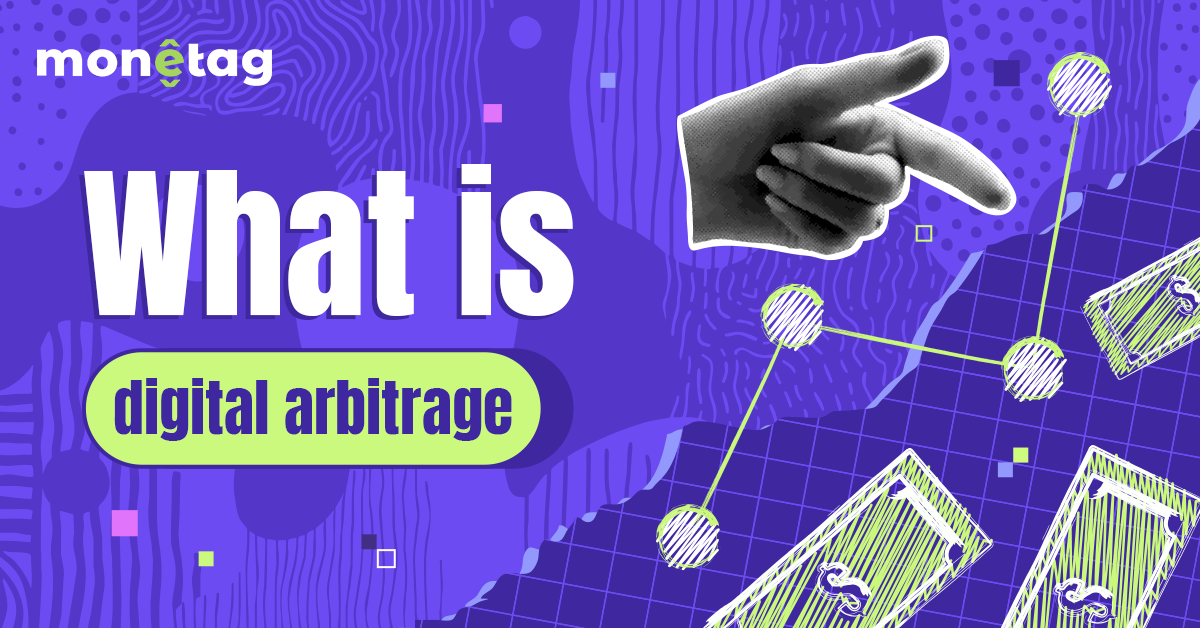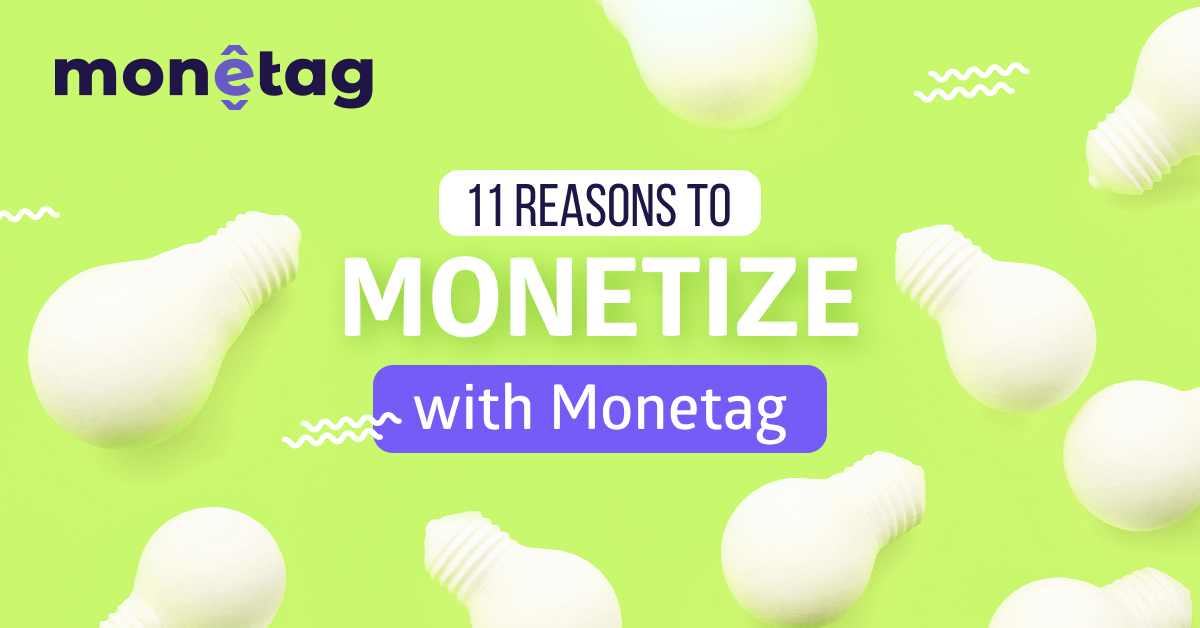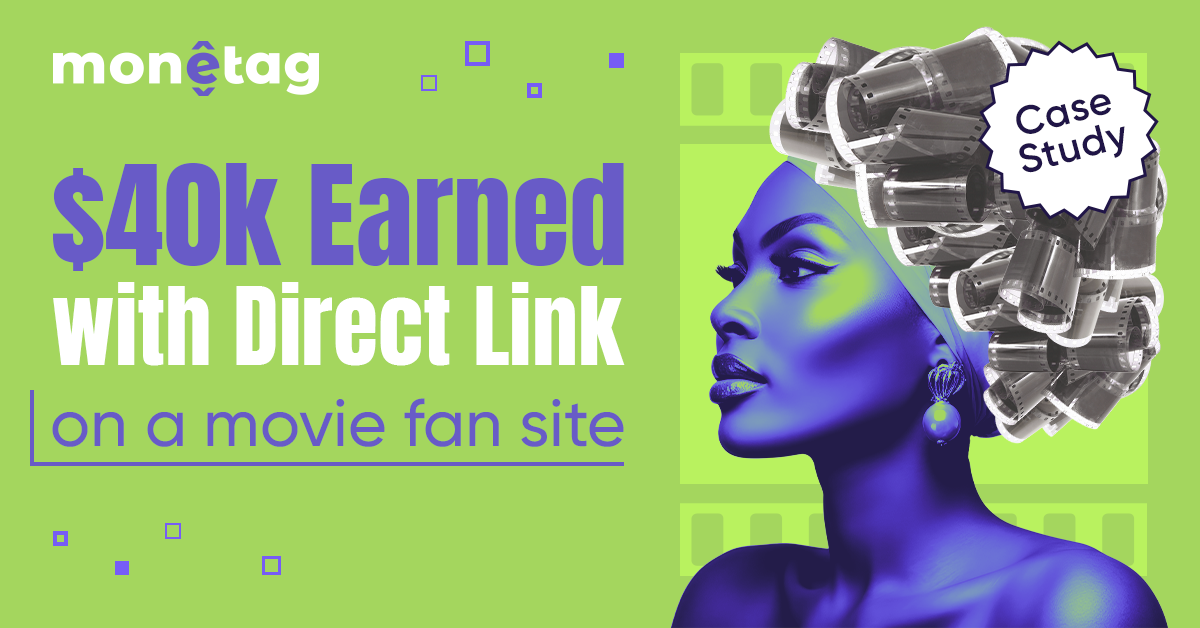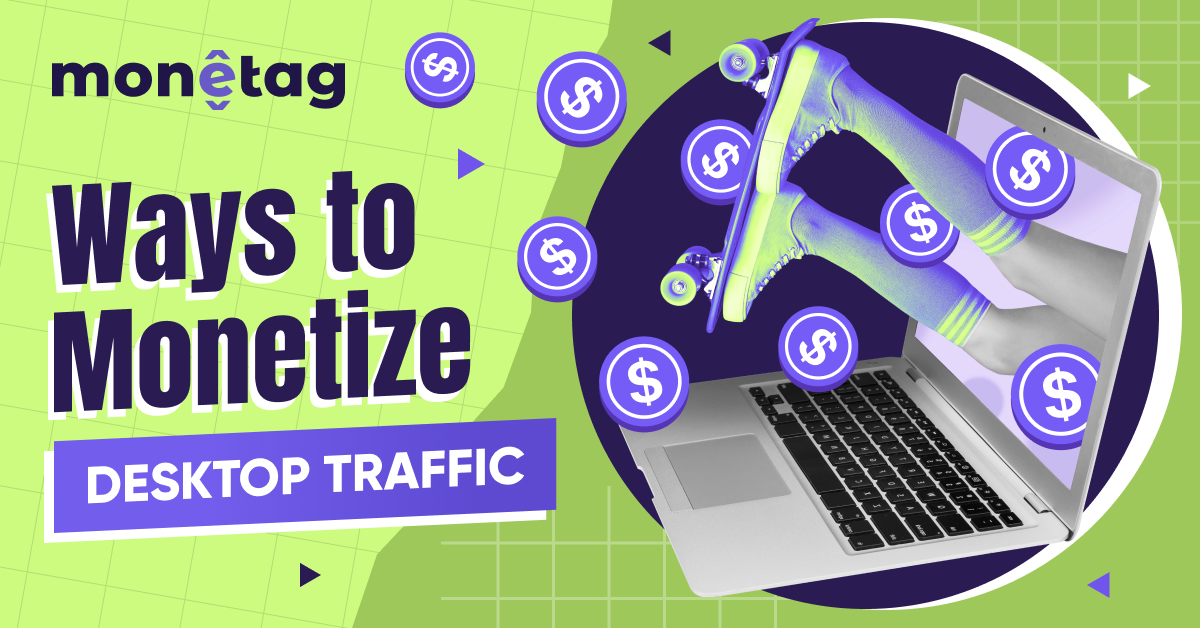What is Digital Arbitrage, And Who Can Profit From It?

If you’ve ever spotted an opportunity to buy something cheap and resell it for profit, you already understand the core idea behind digital arbitrage. But instead of flipping physical goods, digital arbitrage happens entirely online.
It’s become a popular strategy for publishers, website owners, and marketers who want to profit from digital assets.
What’s digital arbitrage?
If you’ve ever thought to yourself, “Digital arbitrage, what is it?!”, look no further than this article.
Digital arbitrage meaning: it’s a method where you buy digital products, services, or traffic at a lower cost and profit by reselling them or using them to generate higher-value actions, like ad clicks, affiliate conversions, or product sales. In a nutshell: find a gap, act fast, and earn from the difference.
Whether you’re running a blog, managing ad campaigns, or selling digital goods, understanding how digital arbitrage works can open up new income streams. In this article, we’ll break down the different types of digital arbitrage, how to start a digital arbitrage business, and how publishers can tap into this model to grow their revenue.
What are the different types of digital arbitrage?
There’s no single way to do digital arbitrage. That’s what makes it so appealing. Whether you’re a content creator, affiliate marketer, or entrepreneur, there are several angles you can take depending on your skills and resources.
1. Affiliate Arbitrage
This strategy involves running ads that lead to affiliate offers. If your earnings from conversions are higher than your ad spend, you’ve found a profitable loop.
This is a form of digital marketing arbitrage, and it’s widely used by experienced marketers running performance-based campaigns.
2. Digital Product Arbitrage
Buy low-cost digital goods like courses, ebooks, templates, or software—often during regional sales or with resale rights—and sell them at a higher price through your own site or another platform. This is classic digital product arbitrage and requires minimal overhead.
3. Content or Ad Arbitrage
This is where publishers and blog owners thrive. You buy traffic at a low cost (e.g., push ads, native, or pop) and send it to pages filled with ads. If you’re earning more from impressions or clicks than you’re spending, you’ve nailed arbitrage digital marketing.
Example: A push ad campaign might cost you $0.01 per click, but if you earn $0.03 per visit from display ads, the margin adds up, especially at scale.
Each strategy relies on the same core principle: profit from the difference between what you pay and what you earn. The best part is that you don’t need to build a product from scratch; you just need to spot the gap and move quickly.
What is a digital arbitrage business?
It’s a setup where you buy traffic or digital goods at a lower cost and earn from reselling or monetizing them, whether through ad revenue, affiliate commissions, or direct product sales. The model is flexible, scalable, and relatively low-risk if you test small.
If you’ve ever asked yourself, “What’s digital arbitrage, and can I do it?”—the answer is likely a resounding “yes!” The barrier to entry is low, and the potential upside can be surprisingly high if you’re strategic about your approach.
Who can start a digital arbitrage business?
One of the biggest appeals of digital arbitrage is how accessible it is. You don’t need to code, ship products, or even be a professional marketer. You just need a good eye for opportunities and a willingness to test.
Here’s who this model suits well:
- Website owners and publishers looking to monetize traffic more effectively
- Affiliate marketers who understand how to match offers with audience intent
- Bloggers and creators who already generate engagement but want better monetization
- Side hustlers testing small budgets for extra income
- Entrepreneurs building full-scale arbitrage operations
How to start a digital arbitrage business
You don’t need a huge budget to begin—you just need to start small, test what works, and scale what’s profitable. Here’s how to build your own digital arbitrage business step by step:
1. Choose your approach
Start with one of the models above: affiliate, product reselling, or digital marketing arbitrage. Each has its own learning curve, so pick one and stay focused.
2. Find your sources
- For products: look for deals with resale rights or marketplace discounts
- For traffic: explore pop, push, or native ad networks
- For offers: use affiliate networks or monetize directly with ad platforms like Monetag
3. Build a monetization page or site
If you already have a website, great. If not, build a simple landing page. This is where your traffic will convert, and where your profits begin.
4. Track your numbers closely
Successful digital arbitrage hinges on this: earn more than you spend. Monitor your CPC, conversions, and RPM (revenue per 1,000 visitors). Use heatmaps and A/B testing tools to improve performance.
5. Start small, then scale
Test with $10–$20 traffic campaigns. Adjust based on performance. Once you’re profitable, reinvest and grow gradually.
Why publishers and website owners should care about digital arbitrage
You’re in an ideal position to benefit from digital arbitrage if you already own a blog, run a niche site, or manage an online community. It means you’ve got one of the hardest parts covered: a platform with traffic.
You can buy cheap traffic, send it to your content, and use ad networks to earn revenue through impressions or clicks. If the income you generate is higher than what you spend, you’re running a profitable digital arbitrage business.
Here are a few ways publishers can get involved:
- Add ads to your site
Use a platform like Monetag to earn from impressions or clicks - Drive low-cost traffic to high-RPM pages
Classic arbitrage digital marketing - Resell digital products or services
Add ebooks, templates, or tools to your niche site - Offer ad space or sponsored content
Arbitrage can also mean reselling exposure
Publishers are in a prime position to benefit. Whether you want to maximize existing traffic or test new acquisition strategies, digital arbitrage gives you a clear path to profit.
Common pitfalls to watch out for
Like any business model, digital arbitrage comes with a few challenges. Here’s what to keep an eye on:
- Low-quality traffic: Cheap doesn’t always mean effective. Focus on relevant sources.
- Strict ad platform rules: Platforms like Google and Facebook have limitations. Always read the fine print.
- Saturated product markets: If you’re doing digital product arbitrage, choose less crowded niches.
- Small margins: Track your numbers closely. Fees and click costs can eat into profit if not managed well.
Start small, stay nimble, and test everything before you scale.
Final thoughts: Is digital arbitrage right for you?
Digital arbitrage is a practical way to build online income with low overhead and real potential. Whether you’re reselling digital products or monetizing traffic, the principle is the same: buy low, sell high, and keep the difference.
It’s a business model you can test with minimal risk. And if you already have a site or audience, you’re ahead of the curve.
So, if you’re still wondering “what is digital arbitrage”, it might just be your next big move.










